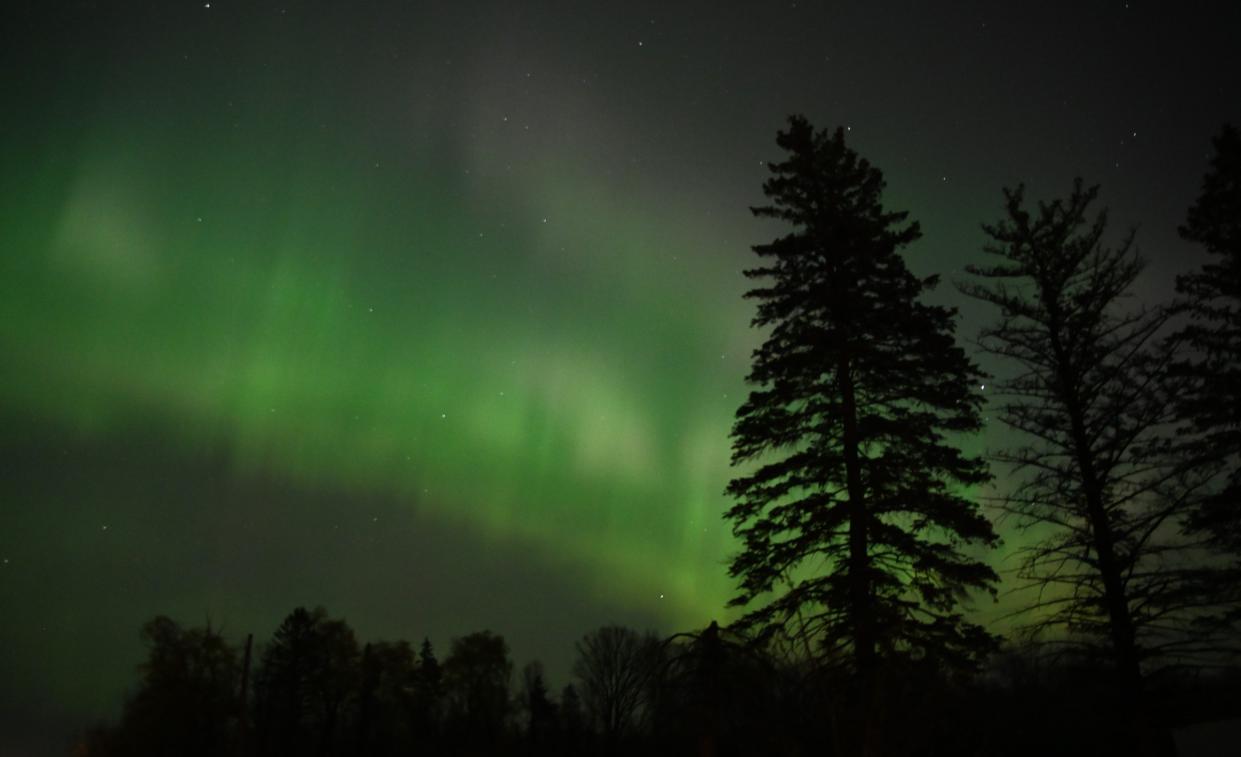Northern lights become visible further south as solar activity rises — but not in Tennessee

A dazzling display of lights will offer quite a spectacle on Thursday in the 17 U.S. states where the northern lights, also known as aurora borealis, are forecast to appear.
Historically, the luminous glows originating from the north pole have been best viewed in the earth's northernmost hemispheres. But as the sun reaches a point in its 11-year cycle known as a solar maximum, the dancing lights of the aurora have become increasingly visible further south.
Yet alas, not far south enough this week for residents of Tennessee to be able to catch a glimpse of these stunning skies.
The University of Alaska Fairbanks Geophysical Institute forecasts that auroral activity will be high this Thursday, causing highly active light displays that will be visible in parts of the U.S. and Canada.
Where to see the northern lights: 17 US states could see northern lights this week. Here's where you might view them.
The natural phenomenon is typically formed when solar wind streaming out from the sun interacts with Earth’s protective magnetic field, according to the National Oceanic and Atmospheric Administration's (NOAA) Space Weather Prediction Center. The severity of this particular geometric activity means that the auroras will be able to be seen farther south than usual in the following states:
Alaska
Montana
North Dakota
South Dakota
Minnesota
Wisconsin
Michigan
Maine
Maryland
New York
New Hampshire
Washington
Vermont
Idaho
Oregon
Wyoming
Indiana
'Internet apocalypse': How NASA's solar-storm studies could help save the web
Why are the northern lights unlikely to be visible in Tennessee?
Though the sun is approaching a peak of a cycle that increases the frequency and distance of the geomagnetic storms that lead to auroras, this particular storm may not be strong enough to cause the auroras to appear as far south as Tennessee.
The geomagnetic storm occurring on July 13 has been predicted to be a G2 level on a scale of 1 to 5 according to the University of Alaska Fairbanks Geophysical Institute.
As time goes on, the northern lights may become visible to more of the United States as strong storms ranked a category G4 or G5 take place. When that occurs, the site of the auroras could extend into the southern parts of the country — such as, perhaps, Tennessee.
However, viewing the auroras also requires clear, dark skies.
"Usually this is pretty far, since obviously the northern lights favor more northern areas," said Cory Mueller, a meteorologist with the National Weather Service's forecast office in Nashville. "But even if they did make it down here it looks like were dealing with some thunder storm chances and clouds would probably obstruct the viewing."
When could Tennesseans see the northern lights?
Solar events will only increase by July 2025, the month and year when NASA scientists say that the sun's activity will peak as part of its current cycle. What that means for Americans across the country is that more opportunities await them to see the northern lights without traveling far.
The colorful light display is caused by collisions between electrically charged particles streaming from the sun in the solar wind that enter Earth’s atmosphere and collide with molecules and atoms of gas, causing them to gain energy, according to the Geophysical Institute. To return to their baseline state, those solar particles release that energy in the form of light.
Sunsets on the sun's surface vary during an 11-year cycle. When that activity peaks, so to does auroral activity, meaning that the chances of seeing the phenomenon further south increase when the sunspot cycle is at a maximum.
NOAA maintains a short-term forecast with the location and intensity of auroras that it updates daily. The Geophysical Institute also provides forecasts and detailed explanations about auroras.
Eric Lagatta covers breaking and trending news for USA TODAY. Reach him at elagatta@gannett.com and follow him on Twitter @EricLagatta.
This article originally appeared on Nashville Tennessean: Northern lights forecast to appear further south. Why not Tennessee?

